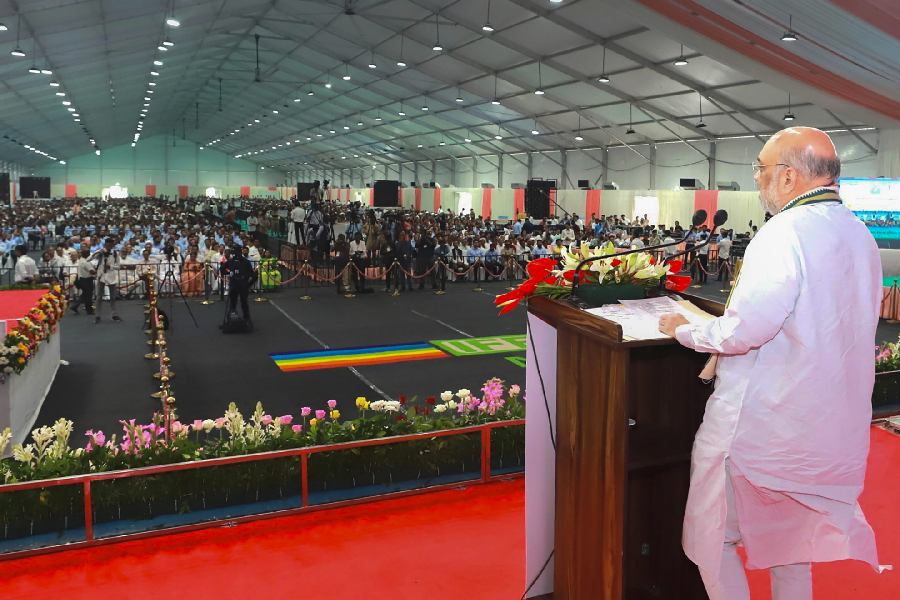Union Home and Cooperation Minister Amit Shah on Saturday said India needs a new green revolution under the leadership of Prime Minister Narendra Modi to show the path of natural farming to the world and lead the way for prosperity of farmers.
This green revolution will bring wealth from across the world to India by finding markets for organic products, he said.
Shah was speaking at the ceremony to lay the foundation stone for leading fertiliser cooperative major IFFCO's nano DAP (liquid) plant at Kandla in Gujarat's Kutch district.
The minister said 2 lakh bottles of 500 ml liquid will be produced per day at the plant, which will reduce the country's dependency on imported fertilisers and save Rs 10,000 crore subsidy on fertilisers.
"I believe that under the leadership of Modiji, the country needs yet another green revolution, albeit of a different kind where production is not the only aim," Shah said while addressing a gathering on the occasion.
In the past, India needed to import wheat and rice, he said, adding that with the efforts of subsequent governments and PM Modi's scientific approach in the last nine years, the country has become self-reliant for food grains, he said.
"But when I say we need a new green revolution, its dimension should be for India to show the path of natural farming to the world and bring about a green revolution for natural farming...This green revolution will bring wealth from across the world to India by finding markets for organic products of our farmers," Shah said.
The new green revolution aims for three things: first, to make India self-sufficient in not just wheat and paddy, but food items of every kind, be it pulses or oilseeds; second, to increase per acre production and preserve soil by encouraging natural farming; and third, to bring prosperity to farmers by finding markets for natural farming produce, he said.
The Modi government is committed to achieve these three aims, and his ministry has set up three multi-state cooperative societies to achieve them, the minister said.
The liquid nano urea produced at the Indian Farmers Fertiliser Cooperative Ltd (IFFCO) plant will "help conserve earth by saving it from chemical poison, retain its fertility, and help farmers in meeting the challenge of retaining soil fertility", he said.
"The biggest thing is that it will reduce imports and make India self-reliant in the field of urea and DAP," he said.
Shah further said that the fertiliser subsidy that India will save through these measures will be returned to farmers, and will benefit both farmers and the country.
The Modi government has worked to make primary agricultural credit societies (PACS) viable, and urged them to change their bylaws and accept model bylaws for greater benefit, he said.
As many as 15,000 PACS have become common service centres (CSC) that serve as the centre of the rural economy, the minister said.
Spread over 70 acres, the Kandla plant will be set up at an investment of Rs 350 crore. It will produce 2 lakh nano bottles of 500 ml for supply across the country and abroad, he said.
According to IFFCO, nano urea liquid is an environment-friendly, smart fertiliser with high nutrient use efficiency and a sustainable solution for curtailing pollution and reduction in global warming, making it a promising alternative to the conventional urea.
The size of one nano urea particle is 30 nanometre and when compared to the conventional urea, it has about 10,000 times more surface area to volume size, the IFFCO statement read.
Except for the headline, this story has not been edited by The Telegraph Online staff and has been published from a syndicated feed.











